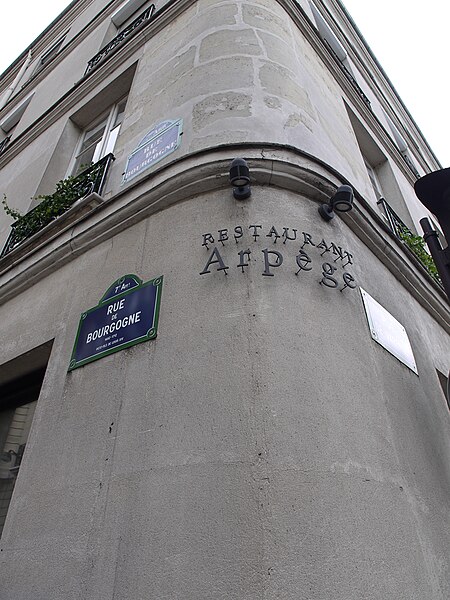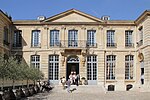Arpège (restaurant)
Buildings and structures in the 7th arrondissement of ParisEuropean restaurant stubsFrench cuisine stubsFrench restaurantsMichelin Guide starred restaurants in France ... and 1 more
Restaurants in Paris

Arpège (French pronunciation: [aʁpɛʒ], Arpeggio) is a 3 Michelin-star French restaurant in Paris. The chef is Alain Passard. It was previously known as L'Archestrate by Alain Senderens. Passard bought the restaurant from Senderens in 1986.It earned one star in the Michelin Guide in its first year, and earned two soon thereafter. It earned three Michelin stars in 1996, which it has maintained since.It was voted the 8th best restaurant in the world, in The World's 50 Best Restaurants in 2018.Arpège is noted for being suitable for vegetarian and vegan dining.
Excerpt from the Wikipedia article Arpège (restaurant) (License: CC BY-SA 3.0, Authors, Images).Arpège (restaurant)
Rue de Varenne, Paris Quartier des Invalides (Paris)
Geographical coordinates (GPS) Address Nearby Places Show on map
Geographical coordinates (GPS)
| Latitude | Longitude |
|---|---|
| N 48.8557 ° | E 2.317 ° |
Address
Hôtel de Broglie-Haussonville (Grand hôtel de Broglie)
Rue de Varenne
75007 Paris, Quartier des Invalides (Paris)
Ile-de-France, France
Open on Google Maps











